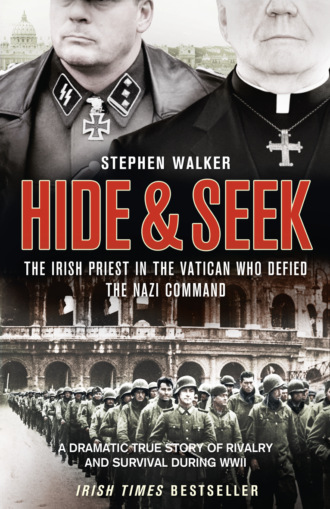Hide and Seek: The Irish Priest in the Vatican who Defied the Nazi Command. The dramatic true story of rivalry and survival during WWII.

Полная версия
Hide and Seek: The Irish Priest in the Vatican who Defied the Nazi Command. The dramatic true story of rivalry and survival during WWII.
Настройки чтения
Размер шрифта
Высота строк
Поля
Конец ознакомительного фрагмента
Купить и скачать всю книгу



